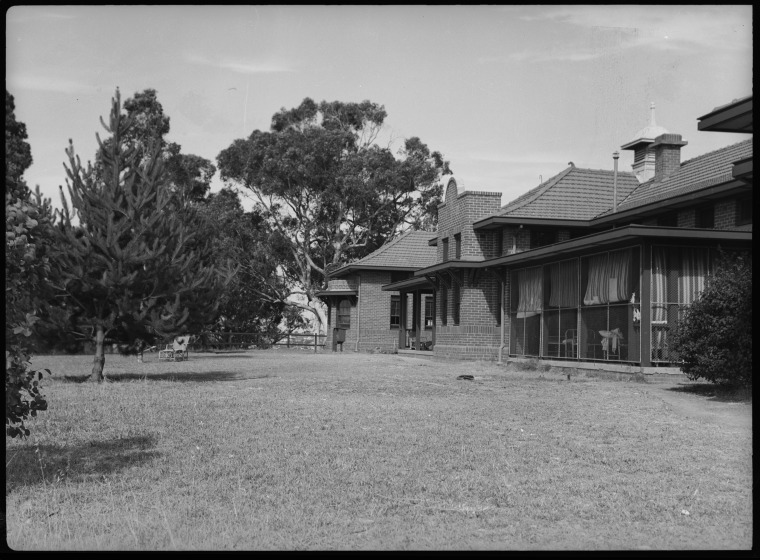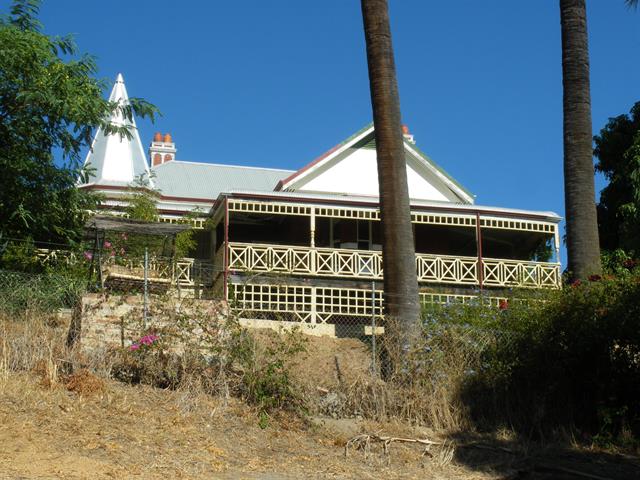
Hawkevale was started by the Slow Learning Children’s Group (SLCG) on a property in Maida Vale in 1957. It was a ‘farm village’ for adolescents and adults with intellectual disabilities, and offered accommodation, employment and recreation. Hawkevale was replaced by a new facility in High Wycombe in 1970. Hawkevale was named after the Premier, Mr…
Irrabeena began in 1961 as the Slow Learning Children’s Group’s diagnostic and assessment centre in Perth. In 1964, Irrabeena became part of the Mental Health Services. Children were assessed at Irrabeena before placement. It is not yet known when Irrabeena closed, but no mention of it has been found since the early 1990s.
The Slow Learning Children’s Group (SLCG) began in Perth in 1951. A group of parents whose children had intellectual disabilities created an organisation that resulted in educational and training programs, appropriate residential facilities, meaningful employment and pathways to independence for all Western Australians with intellectual disabilities. In 1989, the SLCG changed its name to Activ…
The Disability Services Commission (DSC) was formed by the ‘Disability Services Act 1993 Western Australia’. The DSC merged and replaced the Authority for the Intellectually Handicapped (AIH, or ‘Irrabeena’) and the Bureau for Disability Services. The Act made the DSC responsible to the Minister for Disability Services, with its key functions being to ‘unify and…
A Board of Visitors for the Heathcote Reception Centre was introduced in 1929 for the independent oversight and ‘protection’ of patients. [From the State Records Office of Western Australia] Following an amendment to the Lunacy Act 1903 in 1920, a Board of Visitors system was introduced in Western Australia for the protection of patients in…
A Board of Visitors for the Claremont Mental Hospital was introduced in 1920 for the independent oversight and ‘protection’ of patients. [From the State Records Office of Western Australia] Following an amendment to the Lunacy Act 1903 in 1920, a Board of Visitors system was introduced in Western Australia for the protection of patients in…

Heathcote began in 1929 on Point Heathcote at Applecross. It was first known as the Heathcote Reception Home, and was a government hospital for people with ‘recent and recoverable’ mental illness. Heathcote sometimes housed Children and adolescents. It closed in 1994. The Royal Commission into Lunacy recommended in 1922 that a new hospital be built…

Fairholme was established in 1952 as a home for 32 children ‘of all ages’ with intellectual disabilities who were transferred from the Claremont Mental Hospital. Fairholme, with Earlsferry, made up the Nathaniel Harper Homes owned and run by the government of Western Australia. Fairholme continued to provide out of home care in the Guildford premises,…

Earlsferry was established as a Home for ten ‘mentally handicapped girls’ who were transferred from the Claremont Mental Hospital. Earlsferry, with Fairholme, made up the Nathaniel Harper Homes owned and run by the government of Western Australia. In 1988, ownership passed to the Authority for Intellectually Handicapped Persons. In April 1989, when Earlsferry was damaged…
The Bureau for Disability Services (‘the Bureau’) was established in 1991, reporting to the Minister for Community Services and Disability Services. The Bureau oversaw the provision of State funding for services provided by non-government organisations to people with physical disabilities. It also had a broad policy and development role such as providing the framework for…